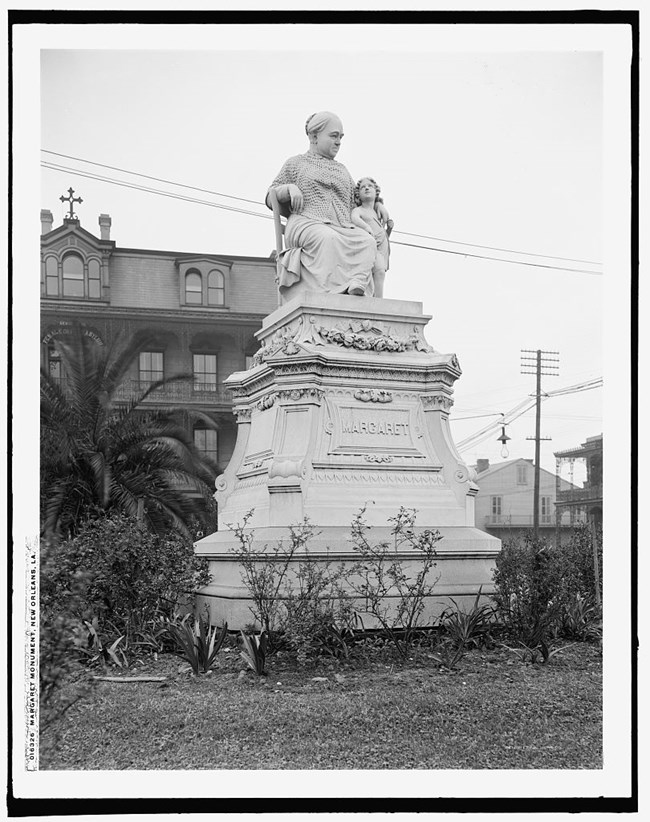
Library of Congress By the mid-eighteenth century, New Orleans was an attractive destination for enterprising Irish Catholics who hated the British. Some received land grants from Spain or France. Others arrived through military service for the French or Spanish. Once in the "New World," the Irish married into Creole families. Some changed the spellings of their last names. These early Irish immigrants had a different experience in New Orleans than those who arrived a century later. After the 1845 potato blight, hundreds of thousands of starving Irish people poured into the United States. Those who arrived in New Orleans found a city where every bit of dry land was already claimed. Housing was scarce and enslaved people performed most skilled labor. Irish immigrants earned next to nothing for dangerous tasks. Many of the city's canals were dug by Irish men. The canals went through mosquito-infested swamps. Many workers died of yellow fever or malaria. But others survived the brutal work, yellow fever, and injustices. The first statue ever erected in honor of a woman in the United States is here in New Orleans. It is a statue of an illiterate Irish peasant, Margaret Haughery. She cared for hundreds of Irish children orphaned after a yellow fever epidemic. The statue stands in a triangular park bounded by Camp, Prytania and Clio Streets. This statue of a seated woman looking down on a child simply reads, "Margaret." Irish people settled in small communities throughout the city. One famous area where many settled the Irish Channel. The area centered on Adele Street. It stretched only two blocks from St. Thomas Street to Tchoupitoulas Street. Over time population grew upriver. The larger neighborhood is bounded by the Mississippi river, Magazine Street, Jackson Avenue, and Felicity Street. At first, they lived in simple small cottages. Later people moved into bigger homes as the opportunity arose. The families were large. Food was coarse but wholesome: corned beef and cabbage, Irish stew, potato pancakes, red beans and rice. Their neighborhood was respectable, but the saloons along the riverfront gave it a bad reputation. Today those same "saloons" draw those of Irish decent to celebrate their heritage. Many Irish bars host concerts and preserve traditional dishes. Some of the businesses sponsor St Patrick's Day parades. More History & Culture
|
Last updated: May 15, 2025






